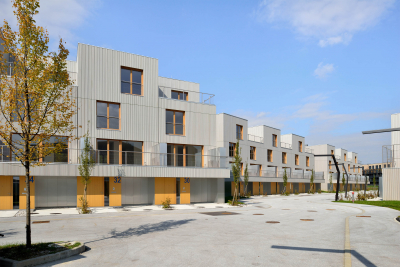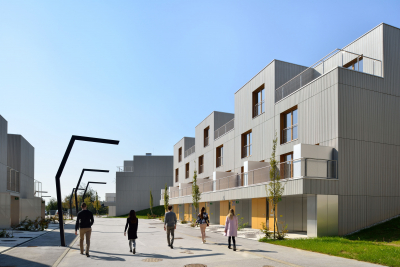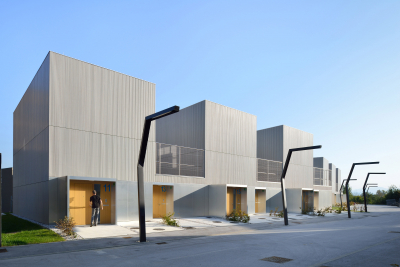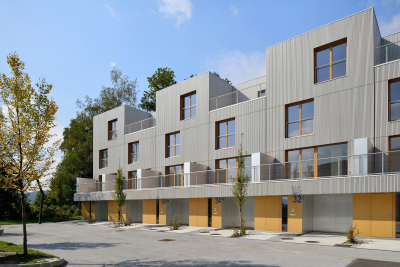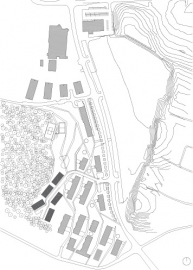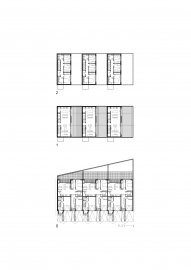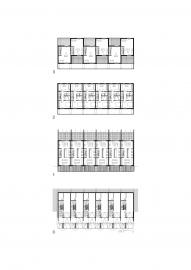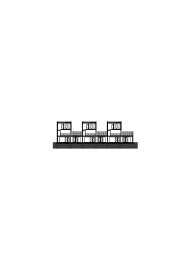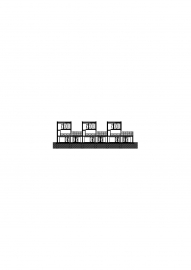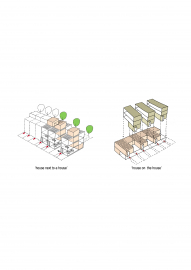Brdo F6 terraced houses
F6 Brdo housing project, located in the semi-suburban area of the city, embraces issues of topography, edge, the essenial efemerality of the programme, while trying to establish a small new neighbourhood of simple, yet complex housing tyopogies.
The housing project is part of state financed housing complex, at the former industrial site in Ljubljana semi-suburbia. The location is at the edge of the new settlement of collective housing, on top of a small hill.
The idea was to form a small 'neighbouhood' of diverse, specific housing typologies – rather than standard, generic types of individual housing - the buildings form rows of houses, benefiting from collective unity.
Two distinct types emerge – a 'house on the house' type – where the idea of 2 differring typologies, sitting one on top of the other, creates 'tetris' type dwellings, and a 'house next to house' typology of narrow, vertical homes forming a strong linear structure along the street.
The whole neighbourhood, clad in pre-patinated wooden strips, exudes the idea of diverse, yet unified housing settlement.
The context – top of the hilly landscape at the edge of the new collective housing project, offered a 'tabula rasa' condition for the project - emerging neighbourhood, and a small topographic difference to work with.
The idea was to establish a small, independent 'island' of housing, a 'housing street', and line the individual units as strips of houses along it, defining the edges of the micro neighbourhood.
Rather than individuality of particular units, the stress is on the collective form they establish – a small gesture of collectivity formed by separate, individual units.
‘House on the house’ type, with two units, one on top of the other, with very different, specific qualities – one occupying lower level serves as a 'base' for the upper unit – where the width of the span is divided into 2 spans – a 'slab' of two level house, and a two level terrace/atrium.
‘House next to a house’ type builds on the idea of super-narrow individual home – a new type of townhouse, within a 5,75 meter span. The living areas on the first floor connect the street side with the back garden that acknowledges the topography of the terrain.
Both typologies develop around a quiet, common green street.
The 11m deep structures are based on a simple constructive system of reinforced concrete walls and slabs, with spans of 5.75meters, rationalizing the building cost. Within this repetitive structural model, different typologies of units emerge.
The whole project is unified through its materiality – the wooden cladding - strips of pre-patinated (weathered) wood 'wrap' the entire neighbourhood into a singular, common appearance. The ground floors, clad in brushed stainless steel panels, hide garage doors and are punctured by individual entrances – allowing for individual units to 'appear' on the street.
The whole project oscilates between the ideas of individual and collective, specific and generic, trying to establish a 'right measure' of intervention, neccesitated by the site and the programme.

